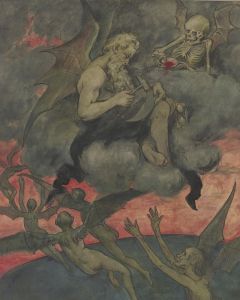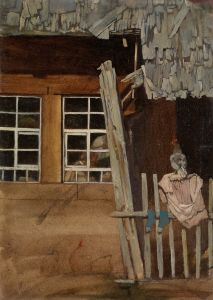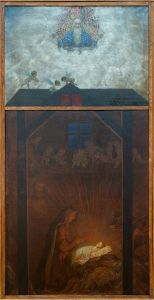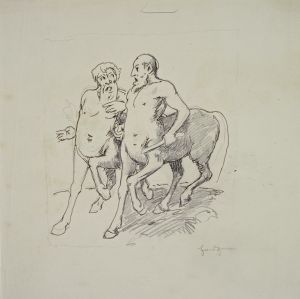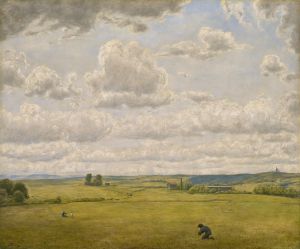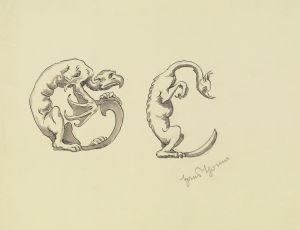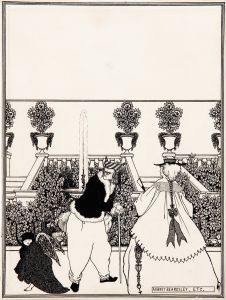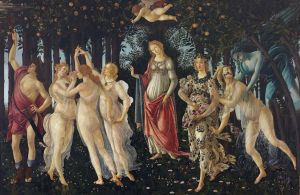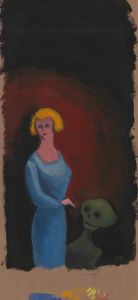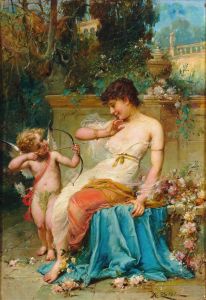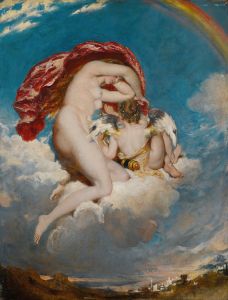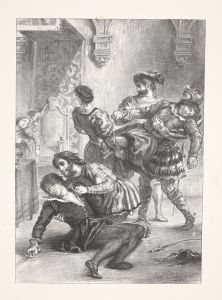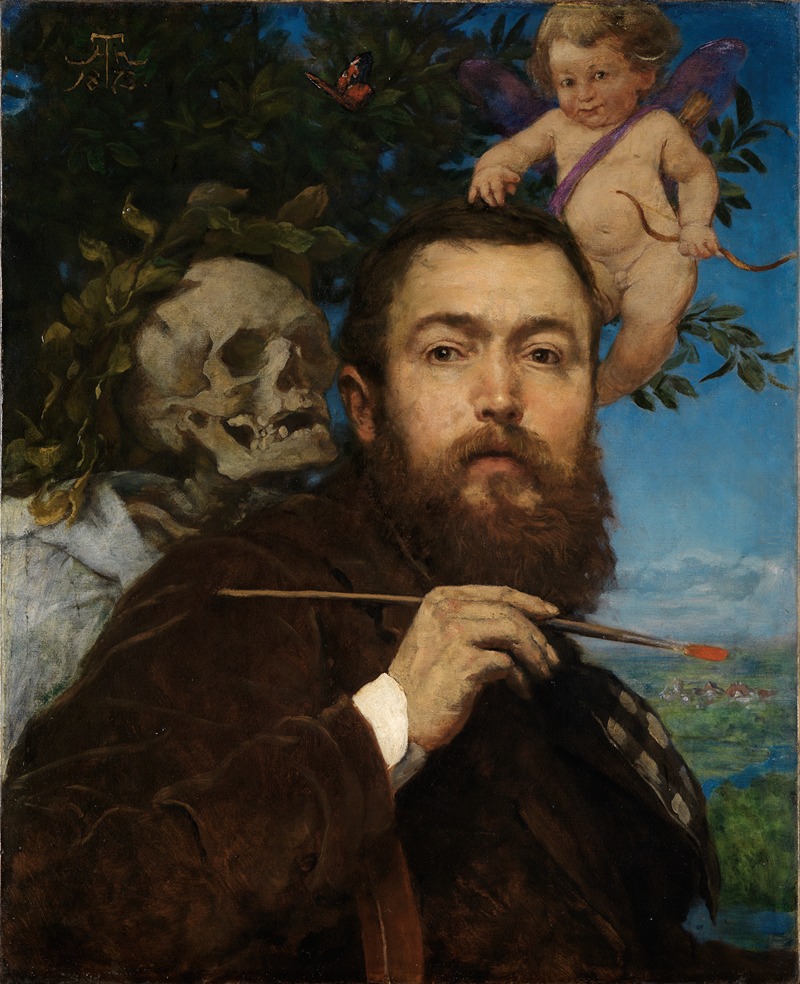
Self-portrait with Cupid and Death
A hand-painted replica of Hans Thoma’s masterpiece Self-portrait with Cupid and Death, meticulously crafted by professional artists to capture the true essence of the original. Each piece is created with museum-quality canvas and rare mineral pigments, carefully painted by experienced artists with delicate brushstrokes and rich, layered colors to perfectly recreate the texture of the original artwork. Unlike machine-printed reproductions, this hand-painted version brings the painting to life, infused with the artist’s emotions and skill in every stroke. Whether for personal collection or home decoration, it instantly elevates the artistic atmosphere of any space.
"Self-portrait with Cupid and Death" is a painting by the German artist Hans Thoma, created in 1875. Thoma, born in 1839 in Bernau in the Black Forest, was a prominent figure in the 19th-century German art scene. He is known for his landscapes, portraits, and genre scenes, often imbued with a sense of romanticism and symbolism.
This particular self-portrait is notable for its allegorical content, featuring Thoma himself alongside two symbolic figures: Cupid and Death. The painting is executed in oil on canvas, a medium Thoma frequently employed. The dimensions of the work are 71 cm by 59 cm, making it a relatively modest-sized piece.
In the painting, Thoma presents himself in a contemplative pose, gazing directly at the viewer. To his left stands Cupid, the classical god of love, depicted as a cherubic child with wings and a quiver of arrows. To his right is Death, often personified as a skeletal figure or a shadowy presence, though in this painting, Death is represented more subtly, perhaps as an older figure or through symbolic elements such as a dark cloak or a somber expression.
The juxtaposition of Cupid and Death alongside the artist himself suggests a meditation on the themes of love and mortality, common motifs in art and literature. Thoma's inclusion of these figures may reflect his own philosophical musings on the transient nature of life and the enduring power of love.
Hans Thoma's style in this painting is characterized by meticulous attention to detail and a harmonious use of color. His technique shows the influence of both the German Romantic tradition and the Realist movement, blending a realistic portrayal of his own likeness with the more fantastical elements of Cupid and Death.
"Self-portrait with Cupid and Death" is housed in the Kunsthalle Karlsruhe, a major art museum in Karlsruhe, Germany. The museum holds a significant collection of Thoma's works, as he spent a considerable part of his career in the region and had a lasting impact on the local art community.
Thoma's work, including this self-portrait, continues to be studied and appreciated for its technical skill and rich symbolic content. His ability to merge personal introspection with broader existential themes makes "Self-portrait with Cupid and Death" a compelling piece within his oeuvre and within the broader context of 19th-century European art.
Overall, Hans Thoma's "Self-portrait with Cupid and Death" stands as a poignant exploration of the human condition, capturing the delicate balance between life's fleeting moments and the eternal forces of love and death.





